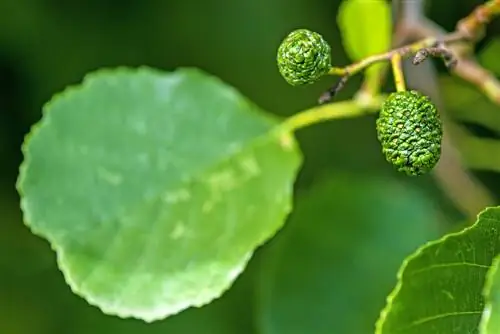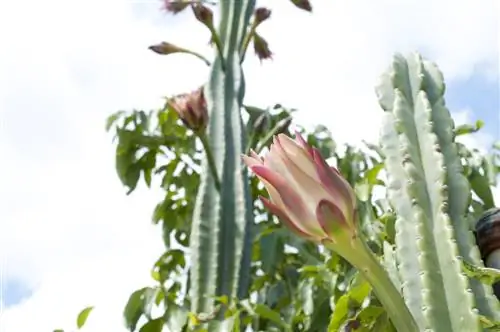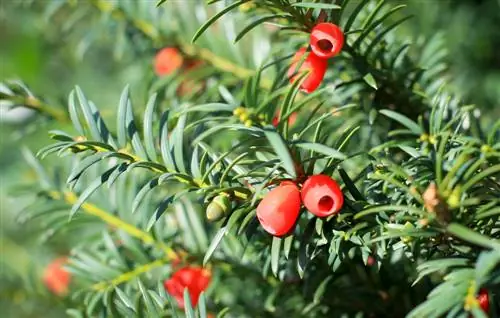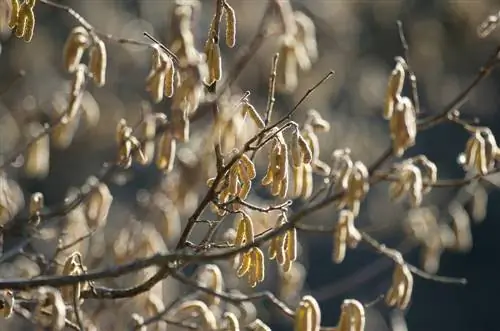- Author admin [email protected].
- Public 2023-12-16 16:46.
- Last modified 2025-01-23 11:21.
In Europe, alder is one of the most common deciduous trees. It is known, among other things, for its deeply cracked bark and easy-to-use wood. But there is also a lot of interesting things to say about the fruits. Did you know that alder is the only deciduous tree that produces cones? Find out many more interesting facts about the fruits of the birch tree in this article.

What does the fruit of the alder tree look like?
The fruit of the alder is a small wingnut that grows from a female inflorescence. The tree is characterized by its woody cones, which look different depending on the species, and which remain on the tree in winter. Propagation occurs mainly via the wind.
Optical features
Since alder is a birch tree, the deciduous tree has the catkins typical of this type of tree. They are the preliminary stage of the wingnuts that will develop later. Due to its striking appearance, you can easily recognize the alder by its fruit clusters.
- as a flower, long catkins
- small nuts
- either winged
- or unwinged
- are formed in cones
Characteristics of different alder varieties
Although the cones are a characteristic feature of the alder, they differ slightly from variety to variety. Here is an overview of the fruits of different types:
- Heart-leaved alder: woody, dark brown, up to 3 cm long
- Black alder: initially green, later dark brown, woody
- Green alder: initially green, later dark brown, woody
- Purple alder, initially green, later dark brown, woody
- Alnus Company Alder: also initially green, but later significantly darker (almost black), woody, fruits remain on the branches even in winter
- Red alder: woody, initially green, later dark brown to black
Development
First, alder produces elongated flowers called catkins because of their shape and bushy appearance. These resemble the flowers of hazel. They have either male or female flowers. An alder tree is usually bisexual, although a kitten only has one sex or the other. In botany this property is called monoecious. The birch plant has a unique feature with regard to further development: the female inflorescences turn into woody cones over time. This process is unique among deciduous trees. And something else is quite rare: alder cones remain on the tree even in winter. Even if the alder has long since shed its leaves, it is easy to recognize it by its cones. Ultimately, small wing nuts are formed that contain the seeds of the alder. Reproduction occurs primarily via the wind.






